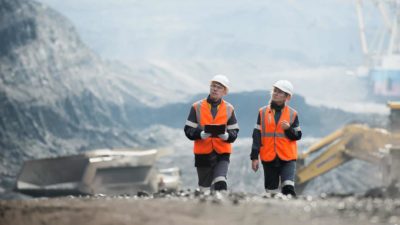The iron ore spot price has exceeded the expectations of brokers and economists alike, running to a 7-year high of US$155 per tonne. This has seen the value of ASX iron ore shares perform well in 2020.
BHP Group Ltd (ASX: BHP) shares have delivered 10% year-to-date returns. Currently trading at around $43, the BHP share price is now eyeing off its previous all-time high record of almost $50 seen back in 2008.
In a similar fashion, the Rio Tinto Ltd (ASX: RIO) share price is currently trading around 14% higher year to date and is within an arm's reach of its pre-global financial crisis record of $125. Fortescue Metals Group Limited (ASX: FMG) has been the most spectacular performer of the ASX iron ore shares, doubling in value this year to a record all-time high of nearly $24.
Australian Government sees prices easing by 2022
The Australian Government commodity forecaster, the Office of the Chief Economist (OCE), published its latest quarterly report for the medium-term outlook for Australia's major resource and energy commodity exports in December 2020.
The report said that prices are expected to remain strong for the next six months, driven by strong government stimulus measures in China and constrained Brazilian supply.
It notes that iron ore prices have proven highly sensitive to movements in demand over the course of 2020. Prior to 2020, many large iron ore miners cut back on investment, closed mines and attempted to retire debt. This has left the industry without substantial spare capacity, magnifying the impact of today's supply disruptions and recent growth in Chinese demand.
With China continuing to direct substantial spending towards infrastructure and property, and domestic steel stockpiles being run down, this is likely to keep pressure on prices over the short term, the OCE said in its report.
Medium-term supply and demand risks brewing
The OCE sees risks split evenly in both directions. From a demand perspective, any easing in Chinese stimulus measures will lead to a fairly rapid downward shift in iron ore prices from the current forecast level. It also sees that current elevated prices could render many Chinese steel makers unprofitable, which could see a modest reduction in production.
From a supply perspective, most Chinese imports come from three large companies, BHP, Rio Tinto and Brazilian miner, Vale.
Output from Vale remains under pressure. In November, the company announced that 33 of its 104 Brazilian dam structures had failed stability assessments, with nearly all the affected dams connected to iron ore facilities. The company remains subject to a range of legal actions, added regulatory processes and other requirements in the wake of the Brumadinho Dam collapse in 2019.
The COVID-19 pandemic also led to significant disruptions of port and rail facilities in the south of Brazil, adding further logistical difficulty. Vale did achieve significant milestones across its southern operations in the second half of 2020, with shipments rising from 64 million tonnes in the June quarter to 82 million tonnes in the September quarter. However, this has not been sufficient to enable the company to meet its initial production guidance for 2020.
Taking into consideration Vale's situation, the OCE expects iron ore prices to remain above US$100 per tonne until mid-2021, before easing gradually to around US$75 by the end of 2022 as Brazilian supply recovers and Chinese stimulus eases back.
Foolish takeaway
With a number of both headwinds and tailwinds facing Australian iron ore miners over the coming year, it will be interesting to watch how these factors are reflected in the movements of ASX iron ore shares.







